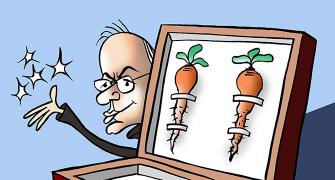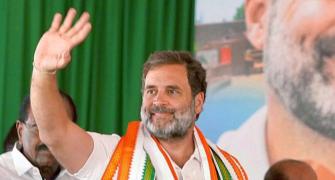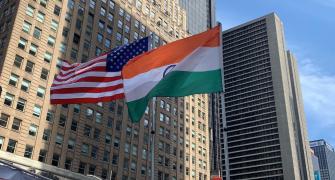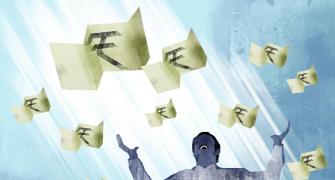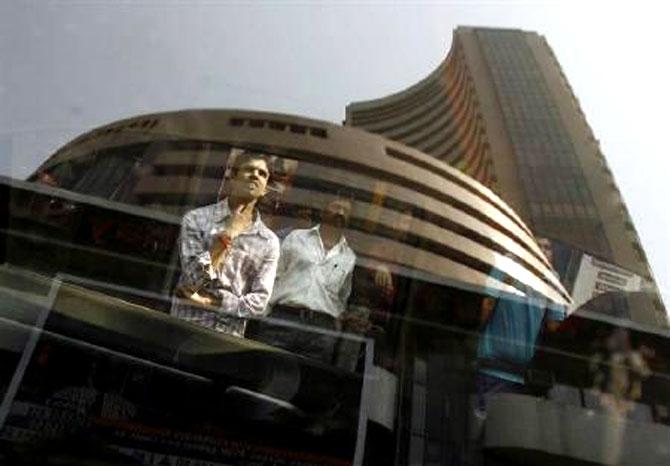Lower interest rates needed to boost manufacturing, officials say.
Arup Roychoudhury reports.
Illustration: Uttam Ghosh/Rediff.com
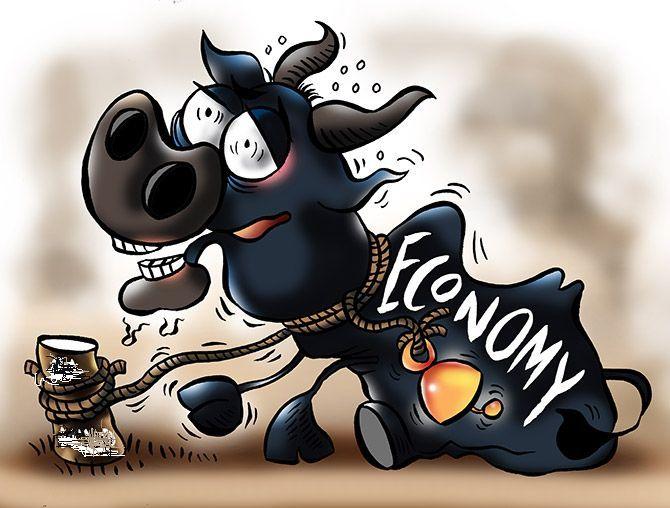
"There is scope for monetary easing because of inflation projections. Inflation last month picked up, but our analysis has taken that into consideration. We had based it on a mid-term inflation of 4 per cent," said a senior official when asked what the Centre thought of another rate cut.
The next meeting of the MPC is on October 3-4.
The MPC has cut rates only once this financial year (2017-18, or FY18), in its bi-monthly policy meeting in August.
But it maintained a 'neutral' outlook, citing uncertainties in inflation trajectory.
The rate cut was the first in 10 months and brought rates to a near seven-year low.
Consumer price index (CPI)-based inflation rose to a five-month high of 3.36 per cent in August, from 2.36 per cent in July, as food items, particularly vegetables, turned costly, after prices fell between April and June.
Gross domestic product (GDP) growth for the April-June quarter fell to 5.7 per cent -- from 7.9 per cent in the corresponding quarter of 2016-17.
This is the lowest since the Narendra D Modi government came to power in 2014 and India has now lagged China in growth for the second consecutive quarter.
Experts have attributed the slowdown to the note ban in November last year and destocking by companies before the goods and services tax (GST) rollout on July 1 this year.
With the criticism of the slowdown gaining in volume, top policymakers in the government have held a number of meetings to brainstorm on ways to revive the economy, boost exports, spur investments, and create jobs for the millions entering the workforce every year.
The officials have deliberated on ways to raise resources to finance higher capital spending beyond the budgeted Rs 3.10 lakh crore for 2017-18.
This could be through higher borrowing or higher disinvestment receipts.
Methods of non-fiscal stimulus have also been discussed; these include more infrastructure bonds issued by central agencies such as the National Highways Authority of India and recapitalising banks through either issuing bonds or paring the government's stake in state-owned lenders further.
Debates have also taken place on whether to spend within the budgeted means or to let the 'red line' of the fiscal deficit target slip.
This is a marked departure from the Centre's previous stance; analysts and economists across the board have said the government should choose in favour of the former, as private sector investment still remains subdued.
The official quoted above said some spending room was already provided for in the Budget.
"We knew when we were making the Budget that we were perhaps cyclically weak. That is why a balance was stuck," the official said.
"Instead of dropping the fiscal deficit from 3.5 per cent of GDP to 3 per cent, we went for a target of 3.2 per cent. Any change in tack in the middle of the year could affect the decision-making credibility of the government," the official pointed out.
The expert committee on fiscal responsibility and budget management had recommended a 3 per cent fiscal deficit target for the current financial year.
At an interaction with the media, officials said some measures to boost economic activity would be announced soon.
Asked about the slowdown in manufacturing, the officials said a number of sectors within manufacturing should pick up once the effects of the demonetisation and the GST rollout dissipated.
"What has happened is that a number of sectors have been affected. Where that manifests itself is that in past two of three quarters, manufacturing imports have increased substantially," the official said.
"Once the effect of demonetisation and GST substantially reverses we should expect those sectors picking up. Also, these sectors have been affected by the appreciation of currency,” the official added.
"Any response has to be across the board to boost manufacturing in the economy, like in interest rate and lower exchange rate. One good news is that the world exports volume has increased significantly. So, hopefully, these one-off effects veering off manufacturing will pick up," he said.
Growth in manufacturing declined to 1.2 per cent in April-June, from 5.3 per cent in January-March.
Mining and quarrying contracted 0.7 per cent during the quarter, after growing 6.4 per cent in the previous quarter.




